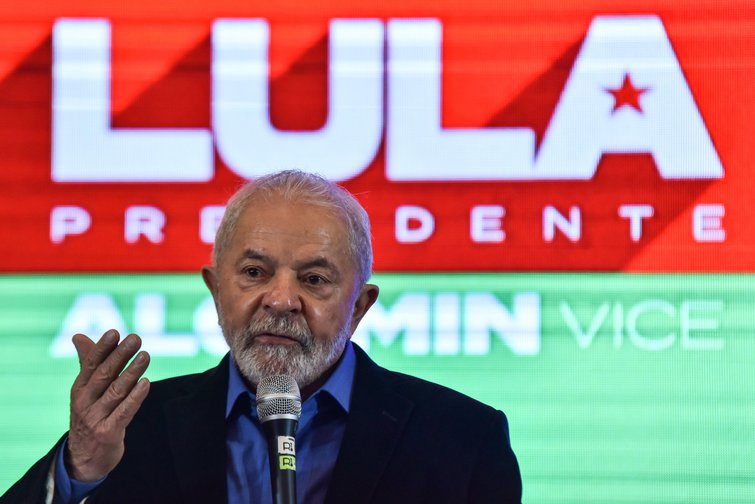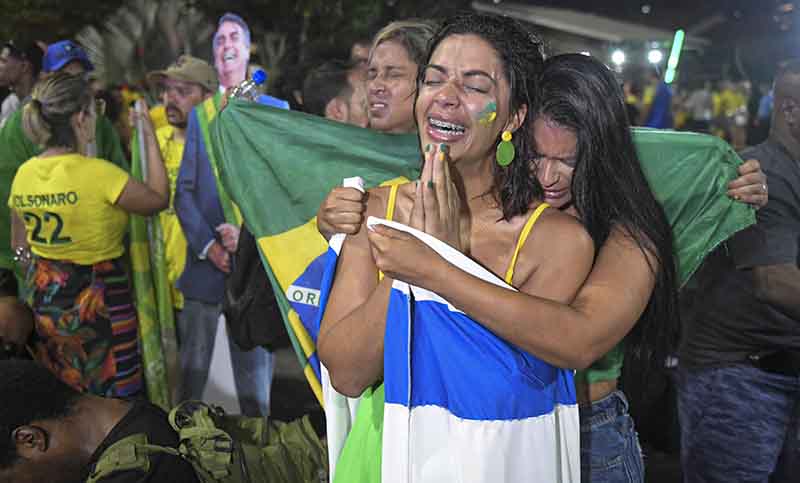Bolsonaro’s defeat and Lula’s comeback
After four years of right-wing populist Jair Messias Bolsonaro, Brazil embraces again, for the third time, the leftist vision of Luiz Inácio Lula da Silva. Lula left the Planalto Palace on December 31, 2010, with an approval rating of over 80%. On 30 October, 2022, he defeated Bolsonaro by a far narrower margin than surveys had predicted, 50.9% to 49.1%.

Two days after the election, President Bolsonaro delivered a short speech in which he issued the order to begin the power transfer. He then addressed the truckers who had blocked the country’s main routes on the night of the election to protest Lula’s victory.
“This social unrest results from the fury and sense of unfairness caused by the election outcome,” he said. However, he also added that “peaceful protests are always acceptable, but we cannot imitate the tactics of the left, which have historically proved harmful to the population by invading private property, destroying public property, and restricting freedom of movement.”
In the hours after his speech, many highways were cleared while others were newly blocked. Tens of thousands gathered in front of army barrack buildings throughout the country, wearing the Brazilian flag’s colors of green and yellow. The largest demonstrations took place in São Paulo, Rio de Janeiro, and Brasilia.
Read also: Bolsonaro: the tricky job of a populist in power
Some protesters called for military intervention, citing Article 142 of the Constitution, which only specifies the armed forces’ constitutional duty to maintain the order in the country. This constitutional provision, however, does not mean at all any sort of “intervention”. Many came to protest Lula’s victory. On November 2nd, Bolsonaro again asked protesters to unblock streets to prevent violence.
Bolsonaro’s government ended worse than it began in 2018, when it represented a powerful reaction to corruption in the Workers’ Party (PT). “Bolsonaro’s real enemy was himself and his fanatical supporters who longed for the military dictatorship,” stated Brazilian journalist Mario Sabino, adding that “Bolsonaro cannot stage a coup.”
Sabino wrote in an article in Infobae that “in Brazil’s history, every coup has had the following favorable conditions: the majority of the middle class, the majority of the Parliament, the big bankers and businessmen, some foreign power (especially the US during the Operation Condor era), and the support of the armed forces. Bolsonaro did not meet these requirements.”

What we can expect from Bolsonaro is that he will likely attempt to negotiate an agreement with the Supreme Court and the Parliament to escape incarceration after leaving office on January 1, 2023. Five ongoing criminal complaints against him in the Brazilian Federal Supreme Court are a compelling motive to negotiate.
In any case, Lula will soon have the spotlight. How will his Brazil be until 2026? It will not be like his first two terms, from 2003 to 2010, because geopolitical and domestic conditions are tougher. The economy is a major cause for concern. According former Economy Minister under PT governments, Guido Mantega, Brazil needs at least €40 billion to fulfill Lula’s campaign promises, which would exceed the country’s spending cap.
Read also: Brazil and the economics of the virus
Lula’s PT already stated that it will halt the privatization policies of the previous administration and increase the state’s economic role. Additionally, the PT wants to modify the labor and social security reforms implemented by the Temer and Bolsonaro administrations and reinstate governmental incentives for the business sector.
The goal is to implement a more flexible fiscal policy that includes lowering income tax rates, exempting those making less than €1,000 per month, and maintaining Auxilio Brasil‘s (a subsidy to the poorest), current monthly amount of about €120 – but with the former name of Bolsa Família, one of the subsidies Lula introduced 19 years ago.
The impact on the state budget and the market response in the coming months will reveal Brazil’s future course. Current Brazilian public debt is approximately 70% of GDP, down from 90% in 2016. That year, an impeachment removed Dilma Rousseff from government. Lula has always called it a “coup”, like his 580 days in prison for corruption and money laundering.
With the Brazilian Central Bank holding more than the equivalent of €330 billion euros in reserves, inflation at 6%, unemployment at 9%, and an IMF-estimated GDP growth of 2.8% in 2022, Lula will undoubtedly have room to maneuver on deficit spending policies. The goal is to fulfill his campaign pledge to offer three meals per day to the 33 million Brazilians who are now food insecure, according to statistics.
The primary concern is whether or not these expansionary budgetary policies can be sustained. Furthermore, Lula’s government will undoubtedly take a 180-degree turn from Bolsonaro’s foreign politics, enhancing Brazil’s reputation internationally. Egyptian President Abdel Fatah al-Sissi has already invited him to the COP27 meeting, which takes place from November 6th to the 18th in Sharm el-Sheikh.
Some one hundred heads of state, including US President Joe Biden and French President Emmanuel Macron, two of Lula’s key allies, will attend the climate change meeting. Moreover, Lula’s return is expected to strengthen relationships with Africa and China and he is viewed with favor by Washington.
“President Lula is well known to the US government, to both Republicans and Democrats. The United States has had a very productive relationship with Brazil during his presidency,” former Ambassador to Brazil (2010-2013), Thomas Shannon, made clear in an interview with the Brazilian daily Valor Econômico.
“Brazil can play an essential role in ensuring food and energy security,” he said. “The United States and Brazil are two of the world’s major food producers and exporters. They can stabilize world markets and guarantee enough food production in a world where the supply of wheat and other goods is limited due to climate change and the Russian invasion of Ukraine. The same holds for the energy sector”.
For Shannon, a Democrat close to former US President Barack Obama, “on the American continent, during the pandemic, both the Organization of American States (OAS) and the Inter-American Development Bank (IDB) have been absent and lacked the capacity to shape a regional response to the consequences of COVID-19. Brazil, especially now that we are looking for new leadership for the IDB, can play a significant role, in trying to rebuild these two multilateral institutions. Historically, it has been an important player within the United Nations.” Shannon concluded, “With Lula, Brazil will be able to play a greater role in the UN system.”
Lula’s Brazil will resume its leadership position in Latin America after Bolsonaro’s isolation, as the left controls the region’s five largest economies: Mexico, Argentina, Colombia, Chile and now Brazil.
Nonetheless, dictatorships such as in Venezuela, Nicaragua and Cuba may be enticed by Lula’s comeback, given that he was one of the founders of the Forum of São Paulo in 1990. This network of leftist parties and organizations was founded to transfer to Latin America the socialist ideas that had failed in the Soviet Union.
The Brazilian vote reflected a commitment to confront socioeconomic inequality, the core issue in the region. But at this point it will be crucial to monitor the incoming administration’s budgetary responsibility to prevent new instances of corruption and a spike in inflation that could impede the nation’s development.
